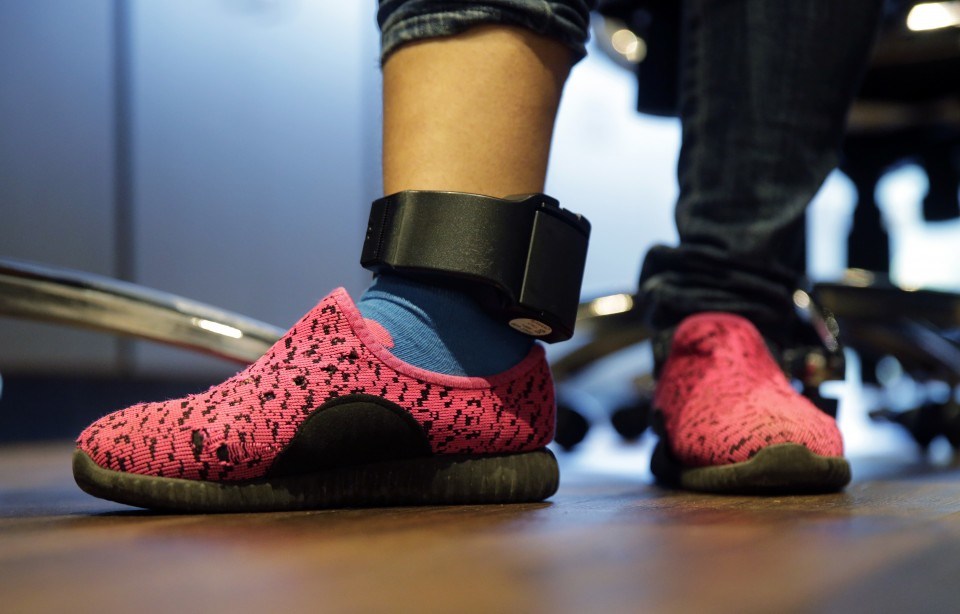Ruthie Epstein is a senior policy analyst on immigrants’ rights at the American Civil Liberties Union.
As the government struggles to reunite hundreds of immigrant children with their parents after almost 3,000 of them were separated at the border by the Trump administration, U.S. Immigration and Customs Enforcement has reportedly turned to GPS-equipped ankle monitors to keep track of the parents while their cases proceed in court.
Ankle monitors are sometimes touted as a substitute for immigration detention — they cost less than $6 per person per day compared to $208 per person per day for detention, and they give immigrants a degree of freedom while ensuring they show up for their court dates, which is the main purpose of immigration detention in the first place.
But ICE’s reliance on ankle monitors raises serious concerns.
Immigrants who have been placed on ankle monitors provided by the private company, BI Incorporated, report pain, discomfort and hospitalization related directly to the ankle monitor units themselves. A 2016 complaint filed with the Department of Homeland Security’s Office of the Inspector General describes the case of a Honduran woman who experienced electric shocks, bruising, hair loss, headaches and difficulty breathing after she started wearing an ankle monitor.
Another woman, a mother from El Salvador, suffered inflammation and bleeding around her ankle and numbness in her leg due to her ankle monitor. A third woman, from Mexico, was hospitalized for the sores that spread over her body after her ankle monitor was put on. These are not isolated cases. For years, both immigrantsand U.S. citizens whom the government has shackled with GPS-equipped monitors have reported negative physical side effects.
Invasion of privacy is another concern since we know almost nothing about the ways ICE handles the data from these devices, whether it’s what information is collected, how long it’s retained by the government, who has access to that information or for what purposes it’s used.
Finally, it is not clear that ICE is using ankle monitors as an alternative to detention as it claims. Instead, it appears that it is using the devices as an alternative form of detention that enables it to expand the total number of people under its supervision. Since 2004, BI Incorporated — a subsidiary of the GEO Group, the second-largest private prison company in the country — has run ICE’s “alternatives to detention” program, which relies on ankle monitors. At its inception, the program received $14 million from Congress. By 2017, its budget had grown to $183 million, an increase of 13 times, which suggests that the use of ankle monitors has also increased. (Neither BI Incorporated nor ICE have been forthcoming with data about how many people the program has placed on ankle monitors annually.)
And yet, over the same time period, the average daily population of immigrants in detention has almost doubled, from 21,298 per day in 2004 to 40,467 per day in 2017. If ankle monitors were indeed being used in lieu of detention, one would expect an increase in the use of ankle monitors to lead to a decrease in detention levels, relative to migration flows.
The government has a range of less restrictive options at its disposal. One is bail. The upside of bail is that an immigrant who has the funds to pay it is released and can pursue his or her immigration case from outside of jail. The downside to bail, however, is that it is often set extraordinarily high and without regard for a person’s financial situation, which means immigrants who can’t afford bail are shut out from this option.
ICE can also grant humanitarian parole, which is a provision in immigration law that allows for the release of an asylum seeker while his or her immigration case proceeds. ICE underutilizes this approach. In fact, the agency’s blanket denials of parole to asylum seekers led my organization, the American Civil Liberties Union, alongside Human Rights First and the Center for Gender and Refugee Studies, to sue the federal government back in March for arbitrarily detaining asylum seekers in violation of federal law and the U.S. Constitution.
Another alternative is for ICE to invest in community-based programs that offer case-management services and referrals to legal counsel and housing. These programs have demonstrated compliance rates between 91 and 99 percent — meaning in some cases, nearly every single person enrolled in them shows up for all immigration appointments and court hearings. And when that level of support isn’t needed, ICE can simply release people on recognizance, meaning they promise to show up for future court dates. The government’s own data demonstrate that 86 to 98 percent of non-detained immigrants with pending cases comply with their court dates, especially when they’ve received clear and accurate information about those obligations.
Given the significant downsides, ankle monitors should never be used unless no other alternative short of actual detention will ensure court appearance. For most of the parents who have been recently reunited with their children, that is simply not the case. Their incentives to show up for their court dates are high; that’s the only way they can receive permission to remain legally in the United States. If we turn to ankle monitors as a quick fix during the family separation crisis — a crisis entirely of this administration’s own making — we risk normalizing a faulty system instead of finding real solutions.
This was produced by The WorldPost, a partnership of the Berggruen Institute and The Washington Post.





